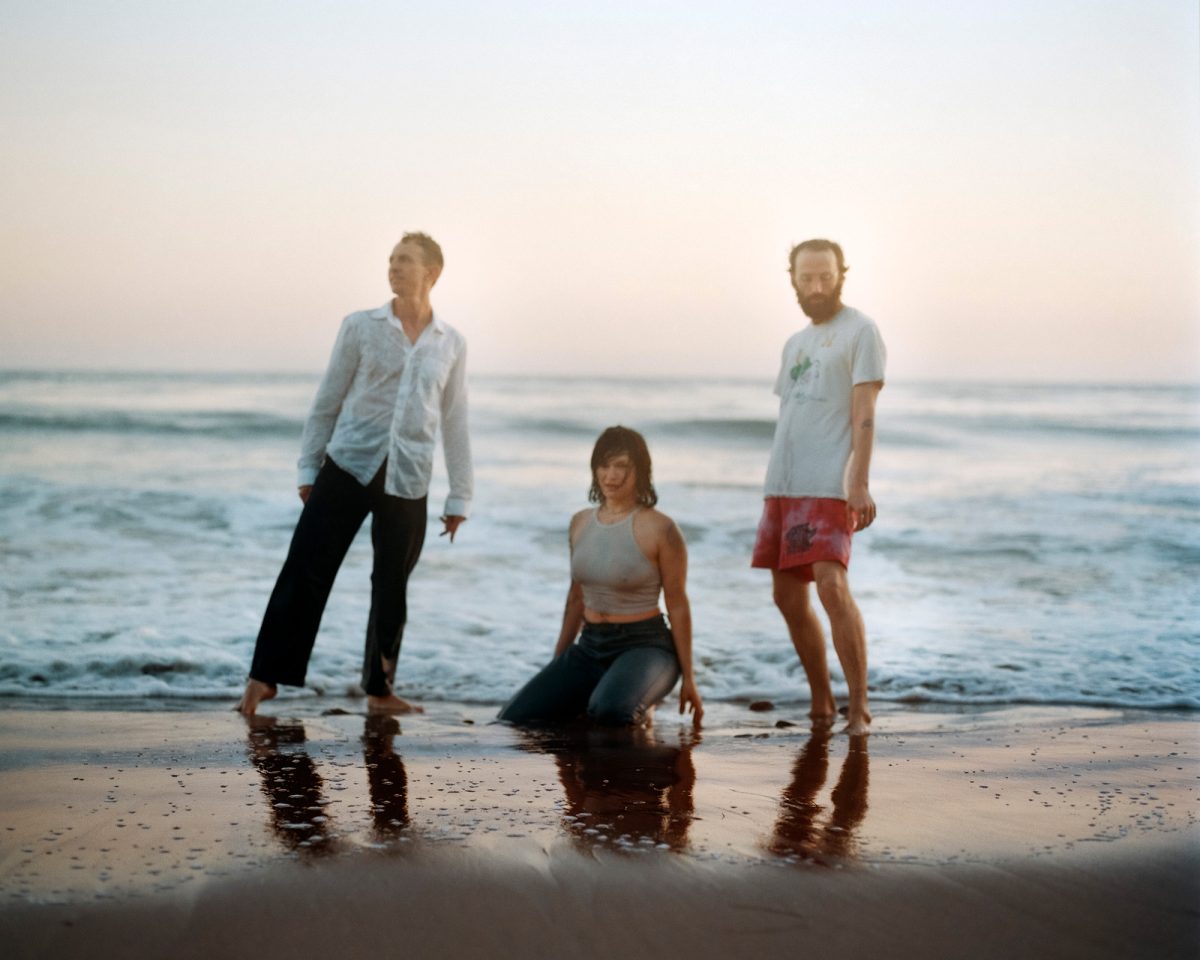
Genesis Báez/Pitch Perfect PR
Big Thief’s sixth album, “Double Infinity,” released Sept. 5, takes a cosmic spin on themes of aging, love, loss, regret and reminiscence. It is the band’s first album as a trio, featuring Adrianne Lenker, Buck Meek and James Krivchenia, after the departure of previous bassist, Max Oleartchik. Using techniques of techno-folk and synth sounds over Lenker’s intimate vocals, this album is one that feels defiant of space and time, relocating listeners to somewhere entirely otherworldly.
Big Thief is a contemporary indie-folk and rock band that began in Brooklyn in 2015, gaining popularity due to their relatable themes and the raw sincerity featured in their lyricism, as well as their experimentalism that feels nearly celestial. Since the band’s start, it has gained over 6.6 million monthly streams on Spotify, making them an influential force in the indie-folk and rock community.
Big Thief’s music is one for the masses, made to speak to people on inter-personal levels. On Instagram, the band captioned its album release with, “Together we can now be inside these recordings, which are eternal and somehow never to recur. … With ideas left at the door, so much room is made for listening. This capture is! a capture of listening. Forget about it!” The band invites audiences to take their own spin on the music, making it not just “A Big Thief” album, but also something unique to each listener. Through lyrics, the album takes them on a non-linear journey throughout life, utilizing themes of childhood, young love, spirituality and the stigmas of getting old, a culmination of life’s different phases. This album can serve as a good hiking soundtrack, perhaps when self-reflection is needed or background music to a good hang out. It can be a sponge to soak out any hidden feelings one might have locked inside.
The album emerges with “Incomprehensible”, a song where suspending twinkling notes greet listeners, as if rewinding through an iridescent star-scape, before Lenker’s rhythmic vocals bring them back down to Earth. The artist describes driving through nature with her lover, and her mind begins wandering towards thoughts of negative societal expectations surrounding aging. “Incomprehensible” features the lyrics, “How can beauty that is living be anything but true? / So let gravity be my sculptor, let the wind do my hair / Let me dance in front of people without a care / Let me be naked alone with nobody there” It is a song of aging gracefully and embracing signifiers of life often deemed “un-beautiful.”
Lenker’s way of delivering both tenderness and power is an art form that comes through as pure lyrical poetry. The title track, “Double Infinity,” is a great example of this. Her words take on a spiritual message, one that feels nearly pagan-like. The lyrics, “Fastening so desperately / To vision and to memory / At the bridge of two infinities / What is forming, what is fading,” Lenker describes this ultimate double infinity, which could be interpreted as life and death. She uses the lyrics, “The eye behind the essence / Still unmoveable, unchanging.” She is referring to her physical being captured forever in photographs. It seems the artist toggles between a physical and a spiritual self, both of which are infinite whether in memory, love, nature or in heaven, however one may want to define it.
The ultimate goal of the album seems to be more about drawing out big feelings from listeners rather than keeping to the linear timeline of birth to death. Instead of explaining stages of life from start to finish, each song stands as a vessel to another realm, another stage in life. “Grandmother,” the album’s seventh track, asks the question of what comes after the exciting parts of life, once there is no more “dancing at the bar” or “kissing in our car.” The artist responds to herself with the lyrics, “It’s alright, everything that’s happened, happened / So what’s the use of holding? / It’s unfolding, we’re all insane / We are made of love / We are also made of pain / Gonna turn it all into rock and roll.” The lyrics inspire the idea that when all you have left are memories, the best thing you can do is create art with them. Lenker encourages listeners to be kinder to themselves by remembering every stage in life is just as valuable as the last. She reminds listeners that it is never too late for creative endeavors, instilling the idea that art too can be eternal.
The album serves as a way to feel, rather than think. It simultaneously allows both good and bad feelings to resonate within the listeners’ hearts, bringing forth feelings of love, sadness, joy and understanding. The album comes to a close with the song, “How Could I Have Known,” where Lenker describes herself at The Pont des Arts in Paris, where she is reminded of her past lovers. Notes of grief and acceptance are intertwined within this last song, understood by the lyrics, “And they say time’s the fourth dimension / They say everything lives and dies / But our love will live forever / Though today we said goodbye / How could I have known?” The music can play different roles for every listener, an opportunity for a different interpretation, a spiritual experience, a grounding exercise or a feeling of release.
Big Thief’s fearlessness in stylistic experimentation has made way for another unique and exciting album, one ready to reach listeners from every walk of life.